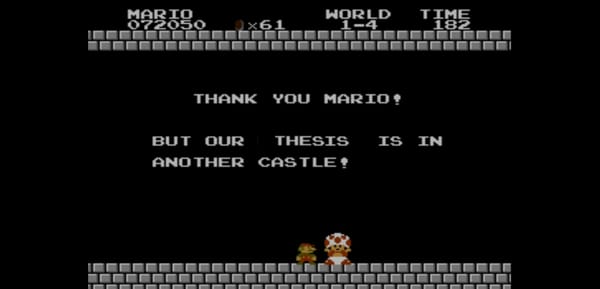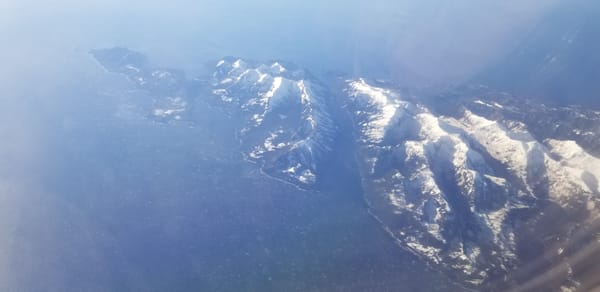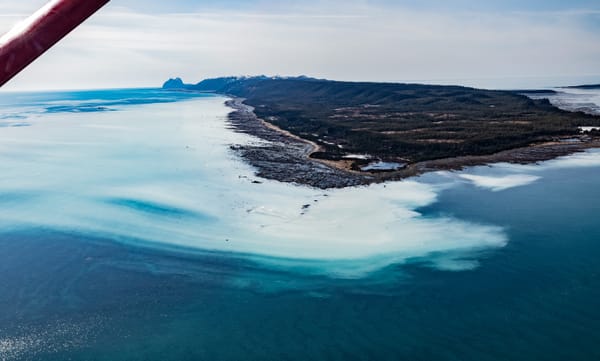Herring Scrap 39 - Certifiably Fishy
This certification will allow expanded access to markets and subsidies for an expanded array of herring products, and promises more pressure on herring in Alaska. It will apply to a full possible range of future herring fisheries in a variety of Alaska locales that have scarcely been studied at all.

I'm back at the scrap-maker, bearing news about the effort (which I most recently mentioned in scrap 37) to secure blanket "Responsible Fishery" certification of all ADF&G-managed herring fisheries in Alaska. I recently learned that the process is now-underway - the certification is being conducted using Certified Fisheries International's (CFI) Responsible Fisheries Management (RFM) Standard of sustainability.
There's an apparent deadline of May 25th at 9am AKDT to register as a stakeholder to participate in the process.
You probably won't be surprised that I think that these certification schemes (like Marine Stewardship Council (MSC) and Seafood Watch) are total inside jobs built on the rotten foundation of modern fisheries management and will contribute to the continued fishing down of food webs. In that regard I'm inclined to agree with fisheries scientist/historian Daniel Pauly, who has warned that certification schemes (most notoriously, the Marine Stewardship Council) allow dirty fisheries the "ersatz glow of sustainability", allowing, for example, "an ever-increasing tonnage of farmed salmon" to be "certified as 'sustainable' because they are fed certified anchovies."
This particular standard and certification outfit seems particularly touched by illegitimacy; a decade ago the Responsible Fishery Management (RFM) certification scheme project was launched by the Alaska Seafood Marketing Institute, with former ADF&G Director of Commercial Fisheries and Herring Revitalization Committee member Jeff Regnart responsible for the program. The program joined a global network of mutual certification schemers called GSSI called the Global Sustainable Seafood Initiative - each certification scheme in the network is strengthened by the affirmation of the others. As the standards have developed, the ASMI/ADF&G connections have become less overt in the materials about the RFM scheme. In the last few years, the certifications have come in: for Alaska Black Cod, Alaska Cod, Alaska Crab, Alaska Flatfish, Alaska Halibut, Alaska Pollock, Alaska Rockfish & Atka Mackerel, Alaska Salmon, Pacific Whiting (Hake)... and for U.S. Gulf Shrimp. And now that that work is done, RFM has been folded into a brand new certification scheme, Certified Seafood International (CSI), which no longer has the appearance of an Alaskan entity (somewhat tellingly, it is registered in the deregulatory haven of Delaware).
Last month, Alaska Seafood Marketing Institute posted CSI's press release (as an "External press release"): here it is. Under the new shell, CSI is going international with the work that RFM started in Alaska, green-washing world fisheries for hire. Jeff Regnart is VP, heading up the Program and Standards for CSI. The Executive Director has previously helmed a "voluntary, independent certification program for labour practices on fishing vessels" and was VP of Global Sustainability and Social Responsibility at Bumble Bee Seafoods for years. 🙄
This certification will allow expanded access to markets and subsidies for an expanded array of Alaska herring products, and promises more pressure on herring in Alaska. This certification will certify as responsible a full possible range of future herring fisheries in a variety of Alaska locales that have scarcely been studied at all.
This week, the Certification Assessment process and team for Alaska herring was announced - pdf here - and of course there's a very short window for participation in the process, with stakeholder registration in the process closing this weekend, May 25.
This is the first and closest look I've ever taken at the guts of a fisheries certification process; so far it's clear that it's a weird and depressing process, and so as I discover it I will attempt to share it with you. This is the process by which a lousy fishery can gain access to subsidies and end up green-washed on store shelves around the world, as many others have and many others will. As I write this scrap, my main goal is to tell you that this process is happening and how you can participate if you'd like to (register with them immediately if so, instructions below); my secondary goal is to figure out for myself if I think there's any pathway to Alaska herring not getting certified (spoiler: yes, maybe, barely, but probably not).
Process Overview
The process announcement indicates that the certification team will do a "site visit" in Juneau the week of May 26. While there, (on the 28th), they'll do what they call a "Data Limited Framework workshop", in order to"to complete a risk assessment for the fishery under consideration and other stocks (e.g. bycatch and Endangered/Threatened/Protected species) for which data limitation has been identified." Given that they're reaching for a sweeping certification of all Alaska herring, the data limitation is almost boundless. Using that process along with available data, they'll go ahead and produce an assessment that tests the fishery against 125 clauses that are part of the standard. After that, registered stakeholders (registration instructions below) will receive that assessment in the form of an almost unreadably ugly hundreds-of-pages document crammed full of any available evidence that the fishery meets the standard, and will have 30 days to comment. From there, the certification moves toward the finish line.
In addition to the announcement, the key documents available on the Certified Seafood International website are their fisheries standard (V2.1), the scoring guidance, and the adapted scoring guidance for data deficient fisheries. You might also be interested in learning about (And... As always when I share this sort of information, I'm offering those links so that you can know what's happening, not to endorse this process. I'm really not recommending that you try to navigate their junky website or their poorly edited eyesore documents, and I'm even reluctant to encourage you to waste your time on engaging in this slimy, seemingly rigged process. But rigged or not, I think the outcome of the process will be consequential. If you decide you want to engage in the process, I hope this information helps.)
To register as a stakeholder, the notice indicates that "Stakeholders who would like to submit information or request a meeting with the assessment team are asked to do so by 17:00 UTC on 25 May 2025." by contacting certification@mragamericas.com with "name and contact information, your association with the fishery, the issues you would like to discuss, and where and when you would like to meet." Upon doing so, I received a message back saying "Since you reached out and registered with us, even if you aren't available during the site visit dates above, we will send you the draft report when we complete it after the site visit. There is a mandatory 30-day comment period to give you and any other registered stakeholders a chance to provide written input at that time before the process continues." And so there will be another opportunity for engagement after next week, but only for people who register as stakeholders now.
Reviewing The Standards
Towards understanding how this process works, I spent a little while reviewing the standards of this certification scheme, as well as how the process is scored by the assessor. After looking at it a while, I think that there are basically two paths by which certification might not be awarded for Alaska herring, but they're awfully slim pathways. I'll tell you about those pathways in the rest of the scrap, but before I do that I will try to tell you as-briefly-as-possible how the assessment works and what is scored.
This certification scheme is made up of 125 clauses and subclauses, 30 or 35 each from the following four "components", or sections: A) The Fishery Management System; B) Science and Stock Assessment Activities and the Precautionary Approach; C)Management Measures, Implementation, Monitoring and Control; D) Serious Impacts of the Fishery on the Ecosystem. The fishery and fishery management and monitoring practices are tested against the rubric for minor, major, or critical non–conformance. More specifically, each clause is graded according to three evaluation parameters, one representing "process", one representing "current status/appropriateness/effectiveness", and one representing "evidence basis". The particulars of those evaluation parameters is different for each clause, but they are universally weak parameters, very low bars for the fishery to meet. If one of those parameters is unmet, then that clause represents an instance of "Minor Non-conformance"; two is "Major Non-conformance"; three is "Critical Non-conformance". No instances of Critical non-conformance are allowed in the whole assessment, but there can be one Major NC per section (of 30 or 35 clauses) or 3 Minor NCs per section. This table from their Scoring Guidance illustrates all that:

For those of us who are rooting for certifiably good fisheries management and (thus) hoping that this process may fail for lack thereof, 125 clauses might seem like an awful lot of opportunities for non-conformance. However, in my (quick and not totally thorough) scan of those 125 clauses, I came up with a short-list of just 9 clauses that I thought might be points of failure for Alaska herring management within this scheme. From those, I found two distinct pathways for non-certification of Alaska herring. I want to share them with you to illustrate areas of this assessment that could be vulnerable to information from stakeholders, but also, maybe even mostly, to get to a bigger point that this process is nearly unfailable for any modern fishery that can keep up with the paperwork.
Ultimately, I think that neither of these pathways will play out; ultimately, the sweeping certification of all herring fisheries in Alaska, whatever they may be, on herring stocks barely known and unknown alike, now that all the rules have changed and the regulations have been knocked way back - but never mind that – is all but assured.
OK!
Failure Pathway #1: Critical Non-Conformance for Impacts on Dependent Predators of a Fishery Targeting Forage Fish
Just one of those clauses seemed to me to have the potential to fail this whole assessment via a Critical Non-conformance. That's clause 12.3, which indicates that if the targeted fish are a key prey species (ie forage fish), then there should be goals and measures in place to avoid "severe adverse impacts" on dependent predators. In the image below, you can see (in the blue section) the three evaluation parameters for the clause: there needs to be a mechanism for assessing and monitoring the role of herring in the food web, and for determining how important herring are as prey, and objectives need to be set about minimizing the impact of herring fisheries on predators; those objectives need to be put into action through management measures; all of that needs to be in evidence in stock and ecosystem assessment reports. I don't know what ADF&G has that they can point to and say they've done all that. I haven't seen any sign of it, whatever it is.

Of the 10 other certifications that have been done by this outfit, mostly in Alaska, none were for fish species that so clearly match up with what pretty well anybody would agree is a "key prey species". If any fishery should be able to fail this clause, it's this one. Potentially crucially, however, ADF&G doesn't list Pacific Herring in 5 AAC 39.212, their "Forage Fish Management Plan" (PDF). This process might prove bendy enough that the existence of that plan itself is enough to satisfy the need for a mechanism to determine the relative importance of herring as a prey species. The second and third conditions would automatically be fulfilled if this process can accept that herring are not a key prey species according to ADF&G's Forage Fish Management Plan. If herring are considered a key prey species within this process, then clause 12.4 covers similar ground and could also be a site of non-conformance, and any combination of 3 failed parameters between those two clauses would be enough to fail the whole process.
Pathway #1 Verdict: There's a bit to work with here.
Failure Pathway #2: 4x Minor Non-conformance for Science and Stock Assessment Activities & Precautionary Approach
Of the remaining 6 clauses that I noted, I felt pretty sure that none of them could possibly yield a "Critical" or "Major" non-conformance; the wording of the scoring is just so unbelievably soft, the required management gestures so facile.
However, 4 of those clauses came from the same category, Category B, regarding science and stock assessment activities and the precautionary approach. If four of them are deemed Minorly Nonconformant from within the same category, then the certification process could fail.
I don't want to get into them here, but readers Below I have copied the text of those four clauses from Category B. Here are those 4 clauses; below each I'll offer a one-sentence explanation of why I think each clause is vulnerable to this process:
4.1 All significant fishery removals and mortality of the target species (shall be considered by management. Specifically, reliable and accurate data required for assessing the status of fishery(ies) and ecosystems—including data on retained catch, bycatch, discards, and waste— shall be collected. Data can include relevant traditional, fisher, or community knowledge, provided their validity can be objectively verified. These data shall be collected, at an appropriate time and
level of aggregation, by relevant management organizations connected with the fishery, and provided to relevant States regional, and international fisheries
organizations.
I think that 4.1 should lose some points because "reliable and accurate data" on bycatch, discards, and waste is not available; however, the evaluation parameters aren't actually very insistent on the reliable and accurate data part of the clause.
5.1.1 Less elaborate stock assessment methods are frequently used for small-scale or low-value capture fisheries resulting in greater uncertainty about the status of the stock under consideration., A more precautionary approach to managing fisheries on such resources shall be required, including, where appropriate, a lower level of resource utilization. A record of good management performance may be considered as supporting evidence of the adequacy of the management system.
I think that 5.1.1 should lose some points because several small-scale fisheries have been driven below threshold level by ADF&G fisheries in the past, AND because the opening of Kayak Island for herring fishing shows that ADF&G is prepared to allow large number of permit holders the opportunity to fish on populations which have not been assessed, which could become a bigger problem now that the regulations have been loosened. However, I think that this clause will likely pass given that ADF&G will be able to point to the fact that herring commercial fisheries openings have not occurred in most Alaska waters in recent years.
6.1 The fishery management organization shall establish safe target reference point(s) for management. Management targets are consistent with achieving maximum sustainable yield (MSY), a suitable proxy, or a lesser fishing mortality—if that is optimal in the circumstances of the fishery (e.g., multispecies fisheries) or is needed to avoid severe adverse impacts on dependent predators.
I've spent a lot of time describing how the herring assessments in Sitka obscure more than they reveal about herring populations in state waters, and how the reference points (for instance, Unfished Biomass) aren't all that defensible and, thus, not all that safe; yet, there's more quality information about Sitka herring than anywhere else in Alaska. Thus I feel sure that this section ought to lose points in this process; I also feel sure it won't. The evaluation parameters are written such that it is enough to just have a reference point that exists within the framing of Maximum Sustainable Yield. Alaska herring fisheries have that.
6.3 Data and assessment procedures that measure the position of the fishery in relation to the reference points shall be established. Accordingly, the stock under consideration shall not be overfished (i.e., above limit reference point or proxy) and the level of fishing permitted shall be commensurate with the current state of the fishery resources, maintaining its future availability, and taking into account that long-term changes in productivity can occur due to natural variability and/or impacts other than fishing
Again, this is about the Simulation Study to Calculate Unfished Biomass. It is designed to accomplish the needs of this clause, by establishing a reference point against which the current position of the fishery can be measured. Since I think that study was rather clearly based on misuse of data, I think there should be points lost here. But the study exists and that's going to be enough in this process.
Pathway #2 Verdict: Not Very Promising
As I winnowed down my short-list as I tried to find ways this process might fail, I noted three clauses (2.3, 4.6, 8.3) that had to do with how the fishery is positioned to deal with alternative perspectives, concerned user groups, conflict, and traditional knowledge. I don't think there's a failure pathway here, but one of them - the only clause that refers to indigenous people in the whole standard, really demonstrates the circular frustration that comes with trying to argue with a state-administered commercial fishery:
8.3 The fishery management organization shall seek to identify domestic parties having a legitimate interest in the use and management of the fishery. When deciding on use, conservation, and management of the resource, due recognition shall be given, where relevant, in accordance with national laws and regulations, to the traditional practices, needs, and interests of indigenous people and local fishing communities which are highly dependent on these resources for their livelihood. Arrangements shall be made to consult all the interested parties and gain their collaboration in achieving responsible fisheries.
You'll know from reading herring scraps that there are a number of reasons to think that due recognition is not being given to the traditional practices, needs, and interests of indigenous people, nor to local fishing communities. However, we can learn from the example offered by the Alaska salmon certification process to understand just what due recognition means within this process. In the image below from the 2nd Reassessment Report for Alaska salmon, the three evaluation parameters are in blue with corresponding evidence for the fishery directly below. You'll see that it is enough that there are laws on the books prioritizing subsistence use to satisfy the first parameter, and enough that the board of fish process exists to satisfy the second. You'll see that the third parameter is inherently satisfied by the first two.

The whole process sort of lays bare the scaffolding of legitimacy that gets constructed as a fishery matures. Now that I know how the standards are defined - and more importantly, assessed - it seems clear that there isn't much standing in the way of future Alaska herring fisheries, whatever they are, bearing a stamp of responsibility via this homespun scheme. I'll stick my head into the process anyhow, see what happens.




